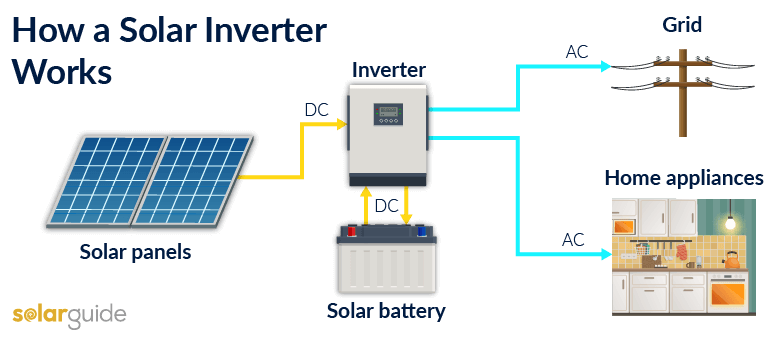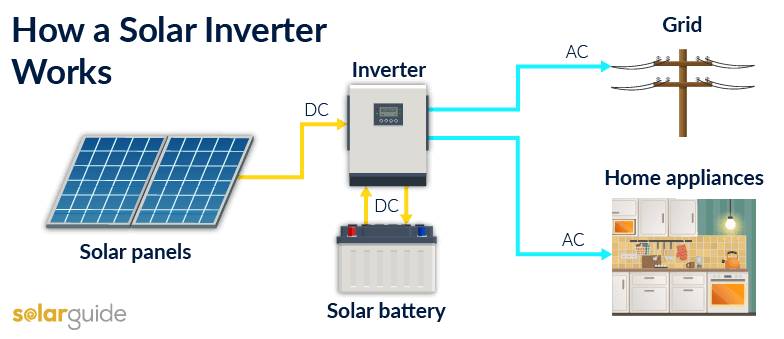Direct Solar USA
Inverters
Inverters
Couldn't load pickup availability
Solar Panels use photovoltaic (PV) cells to convert daylight into electricity. However, this electricity is in the form of a direct current (DC), while most household electrical devices operate from an alternating current (AC), so solar energy needs to be converted from DC to AC to power your home.
This is where a solar panel inverter comes in. It is an essential device for any solar panel system – and there are a few different types available on the market. Here, our experts explore the purpose of solar inverters in more detail, and how to choose the right one for your system’s installation
Microinverters
Microinverters are small inverters located on each solar panel. They convert DC to AC at the panel level, which means each panel can operate independently.
This setup ensures the other panels remain unaffected if one panel is underperforming, perhaps due to shading or dirt. This is particularly beneficial for roofs with complex shapes or orientations, where shading may be an issue.
On the other hand, microinverters are more complex to install and are generally more expensive upfront because you need one for each solar panel.
String inverters
Unlike microinverters, a string inverter is a single unit that serves all the solar panels in your array. The solar panels are connected in a series, creating a “string”, and the generated DC is sent to the central string inverter to be converted into AC.
String inverters are more cost-effective than microinverters, as you only need one per array. They’re also easier to maintain and replace when necessary. However, if one panel performs poorly, it can affect the output of the whole string.
Hybrid Inverter
Hybrid inverters work the same as any inverter – converting DC to AC – but also handle power exchange with solar battery storage systems and the mains grid (hence the term ‘hybrid’), depending on the model.
Without a hybrid inverter, you’ll need a battery inverter to exchange power with a battery.
Choosing a hybrid inverter means that if your solar panels generate more power than you use, the excess energy can be stored in a battery for use later or exported to the utility grid. This could enable you to take advantage of the Smart Export Guarantee (SEG), where some energy companies will pay you for the excess energy you generate and feed into the grid.
Although a hybrid inverter may have a higher upfront cost and require a compatible battery system, they’re a versatile choice for many domestic setups.
Share


